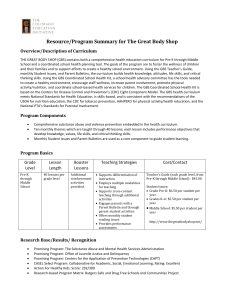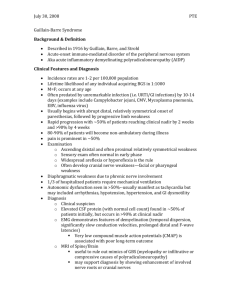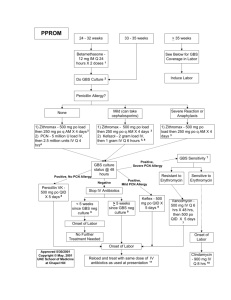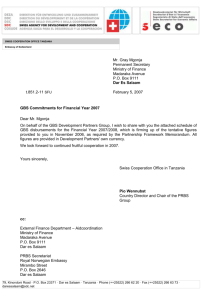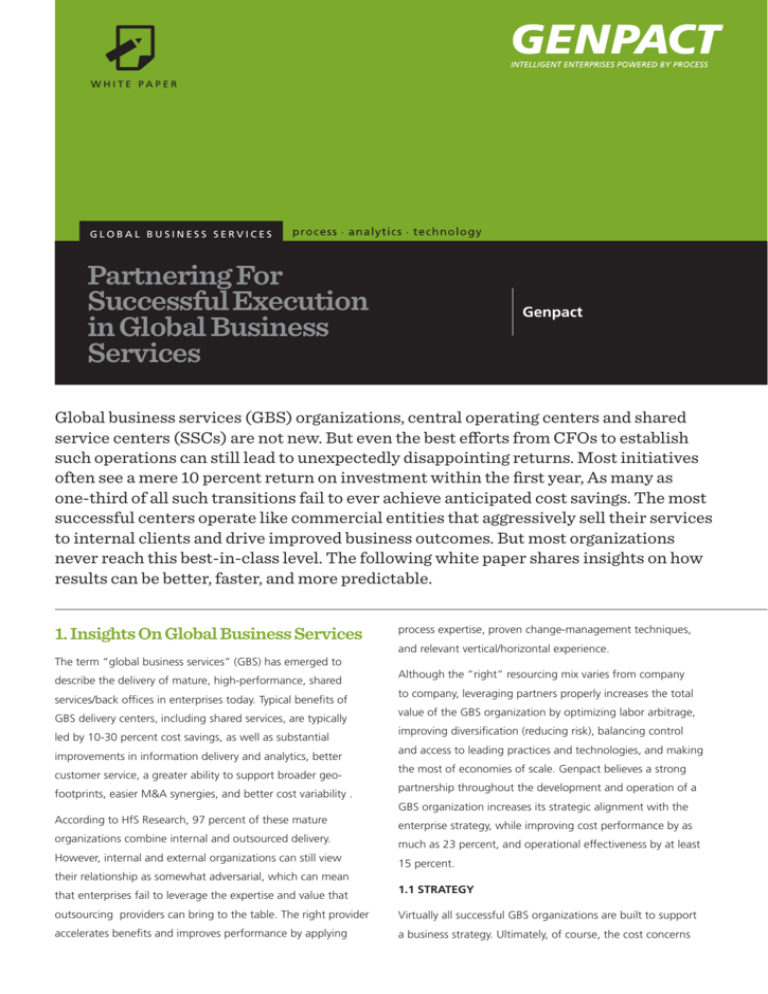
GLOBAL BUSINESS SERVICES
Partnering For
Successful Execution
in Global Business
Services
Genpact
Global business services (GBS) organizations, central operating centers and shared
service centers (SSCs) are not new. But even the best efforts from CFOs to establish
such operations can still lead to unexpectedly disappointing returns. Most initiatives
often see a mere 10 percent return on investment within the first year, As many as
one-third of all such transitions fail to ever achieve anticipated cost savings. The most
successful centers operate like commercial entities that aggressively sell their services
to internal clients and drive improved business outcomes. But most organizations
never reach this best-in-class level. The following white paper shares insights on how
results can be better, faster, and more predictable.
1. Insights On Global Business Services
process expertise, proven change-management techniques,
and relevant vertical/horizontal experience.
The term “global business services” (GBS) has emerged to
describe the delivery of mature, high-performance, shared
services/back offices in enterprises today. Typical benefits of
GBS delivery centers, including shared services, are typically
led by 10-30 percent cost savings, as well as substantial
improvements in information delivery and analytics, better
customer service, a greater ability to support broader geofootprints, easier M&A synergies, and better cost variability .
Although the ”right” resourcing mix varies from company
to company, leveraging partners properly increases the total
value of the GBS organization by optimizing labor arbitrage,
improving diversification (reducing risk), balancing control
and access to leading practices and technologies, and making
the most of economies of scale. Genpact believes a strong
partnership throughout the development and operation of a
GBS organization increases its strategic alignment with the
According to HfS Research, 97 percent of these mature
organizations combine internal and outsourced delivery.
However, internal and external organizations can still view
enterprise strategy, while improving cost performance by as
much as 23 percent, and operational effectiveness by at least
15 percent.
their relationship as somewhat adversarial, which can mean
that enterprises fail to leverage the expertise and value that
1.1 Strategy
outsourcing providers can bring to the table. The right provider
Virtually all successful GBS organizations are built to support
accelerates benefits and improves performance by applying
a business strategy. Ultimately, of course, the cost concerns
dominate, although many organizations implement GBS
• Choose partners that are comfortable in a mixed-
strategies to support efficient global expansion and create
delivery mode - The more they view internal resources
process consistency. The success of a GBS initiative is highly
as “competition,” the more the relationship is likely to be
correlated to a solutions focus. The goal should never be to
unproductive. A provider relentlessly focused on expanding
“build a data warehouse,” for example, but to more broadly
scope is not pursuing a strategic relationship. Companies
improve management decision-making. All high-performing
GBS organizations define their metrics in terms of tangible
business outcomes and articulate their services as meaningful
contributors to the success of the business.
A significant majority of GBS organizations themselves operate
quasi-commercial entities that must deliver consistently to earn
customer trust. This is a huge - and often difficult - change for
internal organizations and an important area where the right
that have “done it” generally outperform companies that
only consult on GBS implementations.
• Mix local and global delivery - Not all processes lend
themselves equally to global delivery. A trusted partner helps in
an honest analysis of what works remotely and what doesn’t.
• Mix internal and external delivery - No successful GBS
organization has an all-internal or all-external delivery model.
• Run the GBS entity like a commercial entity - The
provider plays a key role. Outsourcing providers themselves
competitive and financial focus that this approach promotes
live and die by the success and profitability of the services
drives accountability and transparency, both of which are
they provide. As such, they can teach and coach the GBS
critical to change management and user acceptance.
organization on how the business services world works.
• Modularity is key - With M&A activity increasingly
To make GBS initiatives successful, outsourcing providers and
common, the ability to “break off” a portion of a process or
clients should build strategic relationships based on shared
system is one way that GBS organizations prove their value.
business goals. These relationships are far more consultative
Un-complicating complicated splits is a huge win for a GBS
than tactical. In fact, the advice can be completely decoupled
organization. Delivering on modularity means designing
from “regular” service delivery, as long as the advice leverages
modular processes, systems, and contracts.
the lessons gained from delivering business services to other
enterprises. In developing a strategy, enterprises should focus
on creating an environment in which external and internal
delivery don’t merely coexist. They actually thrive because the
unique contributions from each model add up to more than
• Individual executive accountability - Enterprises with
designated single points of global accountability fare much
better. Process executives should have both financial and
operational responsibility.
the sum of the parts. By contrast, a tactical relationship does
• Executive stakeholder engagement - Success requires
not support strategic outcomes. This level of collaboration is
a delicate balance of ownership and executive—usually
very difficult to achieve, but the benefits justify the effort.
CEO-level—mandate. There is no single prescription for
1.2 Implementation
best-practice governance, since culture and history vary
greatly. However, the likelihood that an external provider has
According to HfS Research, two-thirds of GBS organizations
seen a similar situation, with the corresponding scars and
report a failure to invest sufficiently in training and a whopping
experiences, is high.
76 percent report not engaging stakeholders properly. Change
management itself is a missed opportunity for provider-client
1.3 Execution
collaboration. While most enterprises endure changes like
A sound strategy and a strong design and implementation
this perhaps only once or twice in a generation, outsourcing
are only the start. No results are achieved until the GBS
providers do this hundreds of times each year. Providers
organization executes. Here again, Genpact has identified
manage large and talented change-management staffs that
leading practices that require close collaboration among
have seen many organizations, with many different cultures,
internal and external delivery groups.
centralize and standardize their back offices. With 61 percent
of all enterprises admitting failure to apply proper changemanagement skills, provider expertise is often a woefully
underleveraged asset.
First, GBSs must outperform the incumbent processes by a
wide margin for business units to perceive them as even equal
to the past. Objective measures can help tell the story, but soft
metrics and subjective perceptions have an outsized impact.
Beyond the significant human challenges of implementation,
Human nature makes people more resistant to new processes,
the following best practices, when applied during the design/
methods, and services. Few organizations understand this
implementation phase, correlate positively with long-term
better than experienced outsourcing companies, which face
success:
this challenge with clients every day.
Once the GBS organization is running stably, it must relentlessly
comprises the priority processes and financial metrics. The
focus on process improvement and efficiency. Disciplines like
following is a framework for selecting the most appropriate
lean six sigma and P-CMM Level 5 can support increases in
business case for a shared services setup.
performance and tell the story of GBS success at operational
and cultural levels. These are techniques in which seasoned
low
High
Cost
outsourcing providers have vast experience, because change
Illustrative
Business case option#1
Business case option#2
is the lifeblood of their business. Providers must be able to
Effectiveness
Business case option#3
objectively demonstrate continuous improvement and progress
toward business goals.
Ease of org. change
Speed of
implementation
Contrary to popular belief, GBS models drive greater
up as quasi-commercial entities with SLAs and consequences
for nonperformance, GBS groups are far more transparent and
efficient than decentralized back offices.
Examples
of risks1
accountability into back-office processes. Provided they are set
Supplier
independence
Legal risk
Level of savings achieved or expected from shared services Respondents %
1.4 Bottom Line
Figure 1: Business case selection scorecard
For most enterprises, the shift to a GBS framework can lead to
uncomfortable change issues. The wrong strategy will derail the
The next step is organization design, based on the processes
whole initiative before it starts, as will a lack of commitment
you have identified. First, review the existing design and
from senior decision-makers. Outsourcing providers that
understand the roles/responsibilities and the control span.
have operated as shared services themselves, acquired shared
Prepare the organization structure and define the roles and
services, or led transitions to global delivery have a wealth of
responsibilities needed for seamless delivery.
expertise that many enterprises fail to leverage. The lessons
from experienced outsourcing providers are invaluable to
enterprises embarking on the GBS journey and/or looking to
1
Benchmarking
significantly enhanced performance in GBS organizations.
2. Best Practices For Global Business
Services
Building global business services (GBS), where some or all
of business processes are run externally, requires changes to
program management, people, processes, and infrastructure.
This is best achieved in two phases: first, design and build the
3
Detailed country
analysis
4
Evaluation
criteria
•Country risk
•Labor costs
•Labor force
•SSC experience
Location
screening
(site visits)
General city
analysis
High-level analysis Country scoring model Qualitative city
analysis
improve GBS performance. Teams that sidestep adversarial
relationships for solid client-provider collaborations drive
2
General country
analysis
Site analysis
•Neutral perspective
•Risk and regulation
•Quality
•Costs
•Demographics
•Completion
•Education
and validation
•Language
of selection
proficiency
process
•Site scalability
•All evaluation
•Existing SCCs
criteria applied
Company-readiness •Infrastructure
Minimum
requirements for •SSC experience
•Existing
countries
•Local operations
company
locations
•Labor costs
•Tax exemptions/
subsidies
•Office rent
Illustrative
Analysis
scope
40 countries 7
countries
2 countries
& 6 cities
Final site
selection
Figure 2: Approach used for site selection
GBS, and then enable and improve it. This document sets out a
series of key requirements and concrete steps for GBS success.
2.1 DESIGN AND BUILD
2.1.1 Program
2.1.1.1 Program planning
The next aspect is site selection. There are three key
parameters: finance, people, and business environment. When
selecting a site, ensure you understand the local financial
structure. Evaluate people skills and availability. Determine
the size of the workforce, the skills they require, the range
Build a business case that defines your criteria for success
of necessary skill sets (including language), and the potential
and priority processes. Use a scorecard based on predefined
attrition rate. Here’s an example of a framework for site
criteria to scope them. There are number of key criteria,
selection.
including the feasibility of decoupling, the legal impact, and
the level of standardization required. Evaluate complexity and
2.1.1.2 Transition and change management
skill availability in order to assess risk. It is important to know
With the design phase complete, prepare a detailed project
the speed at which in-scope processes can be centralized, the
plan with key deliverables and milestones for transition.
savings opportunity, and the effort and change management
Templates should be transparent and methodologies clear so
required. Based on these choices, prepare a business case that
stakeholders can sign off with confidence that their needs will
be met. It is important to define the transition procedures and
communications for supervisory teams to manage resistance
deliverables for each stage. A plan for knowledge transfer is
and sustain change.
essential, including documentation of processes, operational
readiness, and team training and performance. When planning
2.1.1.3 Control assessment and framework
a pilot, validate site readiness, define metrics for measuring
This framework can mitigate the risks that arise during
performance, and plan for production under supervision.
transition processes. Dive deep into the processes to find
incremental risks and map these to existing controls. Identify
Anticipate
Pre-change readiness (Organization, sponsorship and culture
assessment)
Categorize
Internal and external key stakeholder analysis to ensure alignment,
acceptance, to assess communication and training requirements
Input
Tools
Interact
Vision
Execute
control gaps for the activities to be transitioned and link these
to activities upstream and downstream. Implement a riskcontrol matrix to ensure controls are not diluted. This helps
provide assurance to management, SOX auditors, and internal
The change management plan integrated with the Project plan
will details all actions to be completed by client sponsors, identified
change champions and Genpact teams
auditors.
A multi-tiered communication plan for internal and external
stakeholders will create awareness of the need, desire to support and
knowledgw required of the change
2.1.2 People
2.1.2.1 Recruitment
Training workshops on managing virtual teams and metrics for the
retained staff will improve client’s employee ability to support the change
To ensure the right team for a GBS transition, you should
Coaching plan and reinforcement communications will enable
client’s supervisory teams to manage resistance from internal and
external groups to sustain the change
detail job specifications and source and screen people based
on their skills. Include your preferred sourcing partnerships in
Ongoing monitoring of effectiveness of change management
initiatives is critical for measuring success
these plans. By mapping key competencies, such as the domain
Figure 3: ACTIVE - Change management framework
and necessary soft skills and defining the sourcing strategy
and setting up the interview process, you support the hiring
Ensure that you manage change as effectively as you manage
of the first FTEs and match the first upswing of demand. The
business processes. A change-management plan will drive
following figure highlights the recruitment approach used by
change at the organizational and individual levels. To ensure
you approach this scientifically, use a specific framework, such
world-class shared services centers.
as ACTIVE.
2.1.2.2 HR framework
ACTIVE helps anticipate the impact of change and categorizes
It is essential to keep employees motivated. You need to deploy
how the organization responds. Identify which tools to
a framework for employee engagement and performance
use and when, and who needs to be involved. The ACTIVE
management that is customized to the back-office and middle-
framework provides a variety of tools, techniques, and forms
office staff. You should include digital platforms for employee
to plan, document, and track every step of the project lifecycle
goal-setting, appraisal, 360-degree feedback, online notes, and
from pre-change readiness and stakeholder analysis to the
notifications. Other essential tools include a talent exchange
communication plan, training workshops, coaching plans, and
portal that empowers employees to chart their careers, locates
ongoing monitoring.
expertise, and inventories employee skills by industry domain.
The framework helps you formalize, standardize, and replicate
change management processes. A multi-tiered communication
Platforms such as these increase employee motivation and
reduce attrition.
plan should include workshops on managing virtual teams and
When building a successful GBS, talent management and
metrics for the retained staff to improve their ability to support
retention are vital. Use an early-warning system to highlight
the change. There should also be coaching and reinforcement
potential attrition based on predefined indicator scores. By
Workforce
Planning
Recruitment
On boarding
& Integration
Talent
Mgmt &
Retention
Key performance Measures:
•On time hiring
•Success rate of new hires
•Cost per hire
•Candidate experience score
Right person @ right time
Figure 4: Recruitment approach
Employee
Care &
Support
Talent
Development
Separation
choosing talent for optimal organizational effectiveness, you
management system helps define the critical metrics for the
ensure effective succession planning and talent availability,
processes that extend beyond SLAs, helping you to provide
enabling you to focus on retention and integration. By offering
clear operations management. Smart enterprise Processes (SEP)
joint career planning, you help plan role changes with minimal
is Genpact’s proprietary methodology that helps in process
disruption and offer alternative career paths. That, in turn,
optimization.
helps ensure that your GBS sources nearly 80 percent of its
new hires from the internal talent pool.
To drive tangible business impact after processes have
stabilized, you need a process-improvement road-map. The
following figure illustrates the improvement roadmap for an
A Create Competency Map
Identify the skills/knowledge
required
•Task analysis and agent profile
•Map trainable/non-trainable
competencies
Identify & map competencies for
new hire
•Hiring the right talent based on
detailed job description
C
Capture Knowledge
Document procedures for all work
types
•Document step by step process for
all work types
Document experimental learning
•Document tactic knowledge – use as
knowledge bank/FAQ list
On the job training
•Buddy sessions
B
Create Learning Path
overtime reporting process.
Analysis of training needs
•Industry specific and domain
based orientation
Define easiest/most difficult
to learn
•Detailed systematic training
plan created with customers
involvement
Design buddy programs
•On-the-job training for
specialized skill set
D Transfer and Sustain Knowledge
Scenario-based training/testing
•Evaluation of techniques-customer
involvement in assessment strategy
SOP created for all work types
•Document process controls, step by
step procedures, key input-output
information
•Sign-off by SAB process owners
Key Observations About
Managing Business Processes
Smart Enterprise Processes
(SEPSM) – A New Science
Core enterprise-level processes cut
across functional silos
Typical focus is on process
efficiency vs. effectiveness
Driving effectiveness delivers 3–5x
benefits over driving efficiency
Companies lack benchmarks to
know how good they could be
Technology is often not the
answer – 50–70% of benefits
from process and insights
Highly scientific, holistic, and
granular framework that takes an
enterprise-wide view of processes
Proprietary IP based on analysis of
200 million+ transactions across
3,000+ managed processes
Maps client performance at every
step of a process and measures
against best-in-class standards
Offers solutions including process,
analytics reengineering, and
focused IT based on achieving
business impact
SEPSM is a unique proprietary methodology that can deliver 200 - 500 percent of
the impact on improved cash flow, margins, revenue growth, or other metrics
Figure 6: SEP overview
Figure 5: Key activities in training and development
2.1.2.3 Learning and development
SEP lever
Once the right people are in place, you need to ensure they
Order
management
have the right skills. Your training plans should bridge the
gap between existing and required skills. To capture these,
create competency maps that identify the skills and knowledge
necessary for particular jobs. Define the training paths –
contextual, technical, procedural, or compliant – and then build
a knowledge base with domain-specific training and document
SubProcesses Key Performance Measures
Key
Business
Outcomes
DSO
(no. of
days)
xx
Billing
learning paths based on the process requirements to sustain
operations. Learning paths help define the relevant processes
Key Performance Drivers
Activities
Credit
5%
and
6.9% 4.8%
rebill %
X%
X%
X%
Rebilling
Cycle
time
X%
%
accuracy X%
X%
of delivery
Accuracy
(%)
95%
88% 100%
No. of
345
5655
collector
X%
X%
%$
collected
% $ past
due
57%
Collections
90%
efficiency 5%
Collections
Past due
5.4%
% invoices
2
38
over 90
aging
Dispute
escalation
and resolution
Minimum
X
X
99.2%
40
Cycle time
to resolve 60
10
dispute
Median
% AR
resolved
under
dispute
1%
43%
100%
Max
to handouts and on-the-job training. To sustain knowledge
transfer, build standard operating procedures for all work types.
2.1.3 Business Process
2.1.3.1 Operational excellence framework
Practices
• Workflow to
monitor rebill
request and
standardize
billing inputs
X%
87%
% touched
/ total and 63% 100%
past due
and contextual training with time-lines. You will need to
prepare document procedures and work types from simulations
X%
X%
contacts/
Establish transactions
140
contact
made per
procedures for all work types and on-the-job training.
The next step is to create knowledge management and
%
on time
delivery
• Proactively
send invoice
& statements
to selected
customers in
advance
• ‘Best time to
call’ analysis
& daily goals
for no. of
transactions
per agent
• Link
incentives
of sales
team with $
collected
• Workflow
tool with
clear
ownership
and
escalation
metrics
• Dashboards
to provide
right
visibility and
accountability
Figure 7: Highlights of the SEP approach
2.1.3.2 Service delivery
By designing and deploying an optimal structure to enforce
Business process management is necessary to drive efficiency
governance, program management, and operational reviews,
and effectiveness in a GBS and to create greater operational
your GBS can achieve many things. You can align strategic
visibility. Deploy a methodology and levers to build an
business goals and establish clear roles and responsibilities for
operationally excellent ecosystem. Vital tools include service
decision-making, issue resolution, and service delivery. You can
delivery fundamentals with built-in escalation matrices and a
also evaluate performance, cost, and customer satisfaction
framework of common minimum practices. A business-process
while encouraging the sharing of best practices.
You need a proven methodology to define, measure, and
and downstream processes. A good methodology first extracts
report SLAs. You can use system reports or workflow tools
data, provides a preliminary analysis, and then baselines the
and reporting on performance via process dashboards. These
data through benchmarking. Then, conduct qualitative and
should collate metrics and data on current performance, define
quantitative assessments, validate the findings, and provide
metrics aligned with the business objectives (which should be
preliminary recommendations. Lastly, validate the findings
industry-wide best practices), baseline the performance for six
internally with the SMEs and make recommendations to design
months, and establish targets.
a best-in-class process.
Capture feedback and satisfaction from business units and end
2.1.4 Infrastructure
users. An automated survey management tool helps analyze
end-to-end capabilities from design to execution, analysis,
2.1.4.1 Facility readiness
recommendations, and follow-up. The tool should also offer
Check the facility for readiness at transition time. Ensure
functionality such as segmenting scores and identifying drivers
that you have IT and telecom in place, that your data center
for each segment.
environment and safety are planned, that you meet legal
2.1.3.3 Transformation services
requirements for buildings, and that your logistics and EHS are
in place.
A framework for process design identifies levers to improve
effectiveness through data and process benchmarking.
The following figure highlights the key activities that must be
Conduct diagnostics on the core process – including upstream
ompleted as part of facility readiness.
Status-quo process
Technician
Current problems
Inform on a daily basis
details of conducted work
Daily gathering of all work
details
Responsible for
monitoring
Daily archiving of work
hours
Supervisor
technician
Check and approval of
monthly forms
Admin staff on
unit
Check of inputs of paper
recorded data for the HR
system 1
Check and final approval
of monthly data by the
end of the month
Head of unit
Target process
Technician
Inform on a daily basis
details of conducted work
Responsible for
monitoring
Data input is paper based and
time-consuming
Fills in a monthly paper
forms on work hours for
the whole unit
Difficult to monitor and check
daily paper forms recording workhours for numerous employees
Data duplication of work hours
in the paper forms and in the HR
System 1
Proposed changes
link to new HR system
Daily gathering of all work
details
process flow
Daily input of work hours
directly into the new HR
system
Supervisor
technician
Monthly check and
approval by supervisor
Finalization of data
captured in the new HR
system
Admin staff on
unit
Data inputted into the system by
the unit responsible for monitoring
Better monitoring of work
hour data due to the reporting
functionalities of the new HR
system
Admin staff will only have to
check if the data is inputted
correctly
Use of e-workflows to eliminate
paper rushing
Check and final approval
of monthly data by the
end of the month
Head of unit
New HR System
Note: Need to reconcile hours approved by unit head with hours declared by employee . Emphasis on checking and control
Figure 8: Process improvement roadmap
2.1.4.2 Business continuity
2.2 ENABLE AND IMPROVE
Your business continuity management process framework
The second part of your GBS strategy is to enable and improve
(BCP (abbreviation doesn’t match term)) should focus on three
the design and execution you have already established.
main aspects: mitigation strategies to avoid/minimize risks;
crisis strategies to respond; and a business restoration strategy
to quickly restore operations, prevent redundancy, and enable
2.2.1 Program
2.2.1.1 Evolution of business case
IT disaster recovery. You need to build the business continuity
At this point, conduct a thorough review of the newly built
management procedures including the necessary blueprints,
GBS against your original business objectives and make
forms, and rules. Conduct business impact analyses to
actionable recommendations for the next phase. Evaluate your
determine the legal and financial impact of contingencies. This
strategic goals. Do you have the right shoring mix, process
helps identify how critical a process is and its recovery time.
portfolio, process improvement potential, and risk review and
mitigation? Is there a potential for cost rationalization against
operational visibility. For an excellent ecosystem, you need
industry benchmarks? Map your productivity against industry
service delivery fundamentals that help managers manage their
top quartile levels to find out. Prepare a detailed roadmap for
deliverables, with an integrated escalation matrix. Common
maximizing strategic, financial, and operational value from the
minimum practices provide a framework for identifying and
GBS to determine if you are achieving your desired cost and
implementing necessary practices. You also need a system to
productivity improvements.
design the business metrics for the processes and beyond SLAs,
2.2.1.2 Controllership framework
providing clear focus for operations management.
Develop segregation of duties (SOD) rules for compliance and
Identify opportunities to drive continuous process
internal controls, initially by conducting detailed process and
improvement. This improves efficiency, turnaround time,
system walkthroughs to identify any potential SOD conflicts.
accuracy, and productivity. By doing so, you deliver business
You review process maps in conjunction with data extracted
impact – increased revenue, expanded margins, improved
from the system to derive roles used in the processes. Review
working capital, and greater customer satisfaction.
these to identify conflicts in role definition and assignment and
Community-based collaboration is essential to business success.
recommend solutions such as role redesign, role assignment
Harness online communities to enhance collaboration among
correction, control monitoring, and mitigation.
internal business units and external experts. Such a network
Prepare for an external audit by reviewing audit schedules
can generate innovative insights and forge new process
and fieldwork to meet scheduled closure timelines with
improvements and analytical solutions. Identify business
minimum work. Review audit schedules according to the
process challenges, publish these challenges on the network,
auditor’s requirements and provide regular status updates to
collaborate with experts, and implement and track the results.
the controller/financial manager. Concentrate on improving
Use collaboration models from direct engagement with one
the business processes that support the audit process and its
top expert to informal discussions with experts and internal
overall delivery.
community discussions.
2.2.2. People
2.2.3.2 Service delivery
2.2.2.1 HR framework
Provide supervision support to your operating team. They
Use the platforms established during your design and build
phase to keep employees motivated and prevent attrition.
Use a detailed training-needs analysis to design training for
your team leaders and supervisors. You can channel feedback
from performance reviews and individual requirements into
the training design. Give your leaders and supervisors soft
should continue to focus on business goals, face internal
customers, and manage their teams. Drive individual
productivity using a variety of measures: inter-agent variation
studies; establishing, measuring, and monitoring process
metrics; preparing dashboards; and structuring process
escalations and resolution plans.
skills training and monitor the progress of enrolment and the
You need a methodology for workforce capacity planning to
effectiveness of the training.
manage the demands including cyclical peaks in volume and
2.2.3 Business Process
unforeseen spikes. An optimized capacity model simulates and
forecasts baseline volumes for seasonality trends, surges at year-
2.2.3.1 Operational excellence framework
end, and the impact of any special events such as promotional
You need a proven operational excellence framework that
activities. The model should also measure capacity shrinkages
drives process efficiency and effectiveness and creates detailed
in cases such as training, planned leaves, unscheduled
Site SelectionConceptual
Stage
•Macroeconomic
Study
•Site Assessment
•Offshore
Competitive
Scenario
•Tax Incentives
•Wages
•Key Advantages
& Disadvantages
•Security Risk
Assessmant
Site SelectionPrimary Stage
•Location & Building Evaluation
•Design
Certification
•Engineering Due
Dilligence
Legal & Tax
•Entity Structure
•Licenses &
Exemptions
•Contracts
Finance
•Entity Structure
•Band Account
Setup
•Salary Structure
•Oracle Finance
Structure &
Implementation
•Authorized
Signatories for
Contracts
•Pricing/
Investment/
Breakeven
Infra &
Logistics
•Environment Site
Assessment
•EHS Clearance
•Engineering Clearance
•Clearances /
Certifications
•Occupational
Certificate
•Fire Department NOC
•Electrical
Certificate
•Commercial Clearance
•Lift Certificate
•Physical Security Setup
•Electrical Load Testing
IT &
Telecom
HR, Hiring,
C&B
•Telecom Regulatory
•HR
Approvals
•Statutory Requirements
•Vendor Sourcing
•Minimum Staffing Requirements
•WAN Connectivity
•HR Systems - Core HR Setup
•Datacenter ( with
BG Setup
required redundancy &
•Automated Time & Attendance
equipment )
System
•HUB Room Setup
•C&B
•Infra Servers & Info
•Market Intelligence
Security Apps.
•C&B Structure
•HRMS application
•Hiring
integration
•Hiring Process for all Applicable
•Oracle Financials
Bands
Application Intergration •Vandor Identification
•Hiring Engine Setup
Figure 9: Activities essential to getting a shared services facility ready
absenteeism, and the impact of special events (e.g., illness,
gaps, building a plan to bridge these gaps, and conducting
strikes, or weather). The model should also provide measures to
process audits and recommending improvement opportunities.
meet demand by cross-training and multi-skilling your agents,
This should help you continuously track and monitor the
training your support staff, and hiring temporary staff. You
success of your practices.
need to know how to access surge resources.
Use an automated survey management tool to measure
customer satisfaction. It should provide end-to-end capability
in terms of design, execution, analysis, recommendations,
and follow up and have functional differentiators, such as
segmenting the scores and identifying drivers for each segment.
2.2.3.3 Business process IT tools and lightweight enablers
2.2.4 Infrastructure
Ensure that your facility is compliant with local laws,
regulations, and EHS specifications. Facility checklists
include asset and estate management, building and services
management, and statutory compliance with environment,
health, and safety regulations.
Your business continuity management framework will
Deploy specific IT tools for process optimization. One might be
review and test the relevant procedures and create employee
an e-invoicing solution to eliminate paper invoices and manual
awareness. Conduct quarterly cold tests to check IT readiness
data entry and optimally capture discount opportunities. You
of your BCM site and an annual hot test to perform real
might also need a workflow suite for real-time work tracking
business transactions from the site.
and allocation of activities across finance functions. Another
possibility is a Web-based technology to automate the invoice
to collect business process (unclear) using self-service. This
reduces time, labor hours, and money spent on the entire
order-to-cash process.
Possible bolt-ons include a reconciliation tool for escalations
and resolution; a close tracker to monitor the progress of
different activities during close; a productivity tool with realtime dashboards and reports for transaction performance and
capacity utilization; a duplicate audit tool to identify duplicate
payments before payment runs, and a tool to detect errors.
These identify opportunities to digitize, automate, and improve
process performance through IT intervention.
Conclusion
Executives want mature industry experience to build and run
global business services that drive cost reduction, process
improvement, and customer satisfaction.
The most successful centers operate like virtual commercial
entities that aggressively market their services to internal clients
and drive business outcomes – but most of them struggle with
this. At Genpact, we help design, build, enable, and improve
global business services such as specialized site selection,
transition, learning, operational excellence and re-engineering,
SEPSM, IT, collaboration platforms, and expansion strategy. We
can provide support without owning your day-to-day FTEs who
2.2.3.4 Transformation services
work on the business process.
You will need an enterprise-wide view that cuts across functions
While driving efficiency, we enable these global business
and processes to establish qualitative links among your business
services to push business outcomes irrespective of current
outcomes and process gaps. A good framework should help
process scope and embed a commercial culture. Genpact is not
drive effectiveness in your business processes and identify
metrics and KPIs linked to business outcomes. You want to see
quantitative modeling combined with practitioner experience.
a consulting firm. We apply science to process and leverage our
immense intellectual property around global business services
and shared services for the benefit of companies engaged in
You drive GBS efficiency and effectiveness by focusing on
building, optimizing, and supporting their own operations. This
common minimum practices. Compare existing processes with
creates, we believe, a perfect foundation to enable our very
the minimum practices, highlighting any design or delivery
cost-effective specialized support services.
About Genpact
For more information, Contact:
Genpact Limited (NYSE: G), a global leader in business process management and technology services,
leverages the power of smarter processes, smarter analytics and smarter technology to help its clients
drive intelligence across the enterprise. Genpact’s Smart Enterprise Processes (SEPSM) framework, its
unique science of process combined with deep domain expertise in multiple industry verticals, leads to
superior business outcomes. Genpact’s Smart Decision Services deliver valuable business insights to its
clients through targeted analytics, reengineering expertise, and advanced risk management. Making
technology more intelligent by embedding it with process and data insights, Genpact also offers a wide
variety of technology solutions for better business outcomes.
gbs.solutions@genpact.com
For more information, visit www.genpact.com. Follow Genpact on Twitter, Facebook and LinkedIn.
© 2013 Copyright Genpact. All Rights Reserved.
Visit us at:
http://www.genpact.com/gbs



